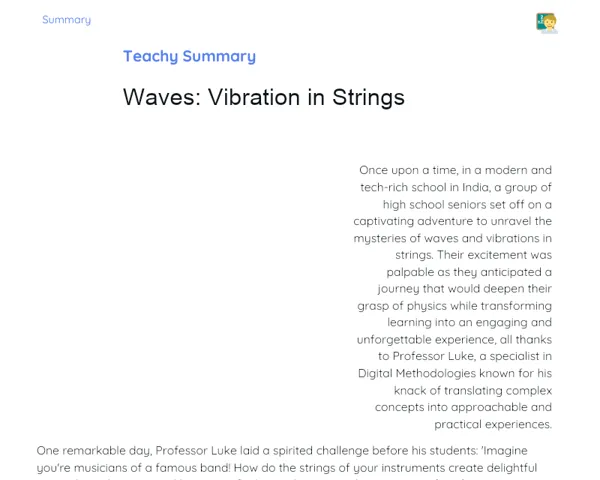Objectives
1. 🎯 Understand that impulse is the change in momentum of an object and how it relates to the force applied over time.
2. 🎯 Grasp the Impulse Theorem and its application in solving practical problems such as collisions and launches.
3. 🎯 Develop skills to calculate and apply impulse in everyday situations, such as in the design of safety devices.
Contextualization
Did you know that the concept of impulse is not just relevant in the realm of Physics but also plays a vital role in various technologies we encounter in our daily lives? For example, the airbags in vehicles are specifically engineered to prolong the duration of a collision, which in turn reduces the impulse and the force that passengers experience. This illustrates how a solid understanding of impulse can contribute significantly to safety in vehicular accidents, underscoring the practical relevance of Physics in enhancing our safety and well-being.
Important Topics
Impulse
Impulse is a critical physical quantity that represents the change in momentum of an object resulting from a force applied over a specific time period. Mathematically, impulse (J) is defined as the product of the force (F) acting on the object and the time duration (Δt) for which the force is applied, as expressed in the equation J = F * Δt.
-
Impulse can be either positive or negative, depending on the direction of the applied force and the associated motion.
-
In scenarios involving collisions, impulse becomes essential in understanding how force influences the motion of colliding objects, such as cars during an accident.
-
Grasping the concept of impulse is vital for designing safety features, like airbags and seatbelts, aimed at lessening the effects of force during accidents.
Impulse Theorem
The Impulse Theorem posits that the total impulse applied to an object is equivalent to the change in momentum of that object. This theorem plays a key role in analyzing and resolving issues that involve variable forces over time, such as the launch of an object or collisions. Mathematically, it is represented as J = Δp, where J denotes impulse and Δp represents the change in momentum.
-
The Impulse Theorem serves as a vital resource for analyzing and anticipating the motion of objects in intricate scenarios.
-
Utilizing this theorem can aid in investigations of accidents and the enhancement of safety features.
-
Comprehending this theorem is essential for tackling practical physics as well as engineering challenges, such as those encountered during rocket launches.
Conservation of Momentum
The conservation of momentum, often referred to as the principle of conservation of linear momentum, asserts that the total momentum of a closed system remains unchanged in the absence of external forces. This principle is frequently applied in mechanics to analyze collisions, explosions, and diverse phenomena, facilitating the calculation of object motion.
-
The conservation of momentum is crucial for solving problems related to collisions where energy is not dissipated.
-
This principle is regularly employed in computational simulations and experimental physics.
-
A clear understanding of momentum conservation assists students in predicting and explaining how complex physical systems behave.
Key Terms
-
Impulse: The change in momentum of an object due to a force applied over a specific time interval.
-
Force: An influence that can result in a change in an object's speed or direction.
-
Momentum: A physical property that illustrates an object's motion and is calculated as the product of its mass and velocity.
-
Impulse Theorem: States that the total impulse applied to an object equals the change in momentum of that object.
-
Conservation of Momentum: The principle asserting that the total momentum of an isolated system is constant in the absence of external forces.
For Reflection
-
How can we utilize the Impulse Theorem to enhance vehicle safety and other transportation technologies?
-
Why is it critical to apply the conservation of momentum principle when designing engineering systems, such as amusement parks or spacecraft?
-
In what ways can grasping the concepts of impulse and momentum be vital during emergency scenarios, such as rescue operations for individuals trapped under rubble?
Important Conclusions
-
In this overview, we examined the concept of impulse and its connection to changes in momentum, emphasizing the Impulse Theorem and its various applications in practical situations and engineering.
-
We highlighted the significance of momentum conservation, a fundamental principle that aids us in understanding collisions, explosions, and various physical phenomena.
-
We recognized how these principles extend beyond theoretical knowledge and have real-life implications in technologies designed to save lives, such as airbags and safety systems in vehicles.
To Exercise Knowledge
- Collision Simulation: Use simulation software to explore various types of collisions between objects of differing masses. Observe how impulse influences the collision outcomes. 2. Airbag Design: Imagine you are an engineer in charge of designing a new airbag. Create a prototype and explain how it should function to minimize the impact of collisions, keeping impulse in mind. 3. Launch Challenge: Calculate the impulse required to launch an object of known mass to achieve a desired velocity. Utilize simple materials like rubber bands and toy cars to build a launcher, testing your predictions practically.
Challenge
🚀 Water Rocket Challenge: Construct a small water rocket using plastic bottles and other readily available materials. Calculate the impulse needed for the launch and modify the design and water pressure to achieve various heights. Record your launches and compare the results with your expectations.
Study Tips
-
Revisit impulse and momentum calculations in diverse contexts to enhance your proficiency with the formulas.
-
Watch videos showcasing physics experiments that demonstrate impulse and collisions, allowing you to visualize these concepts in action.
-
Engage with your classmates to discuss practical challenges and apply the Impulse Theorem to everyday issues, such as calculating the force required to bring a moving vehicle to a stop.



